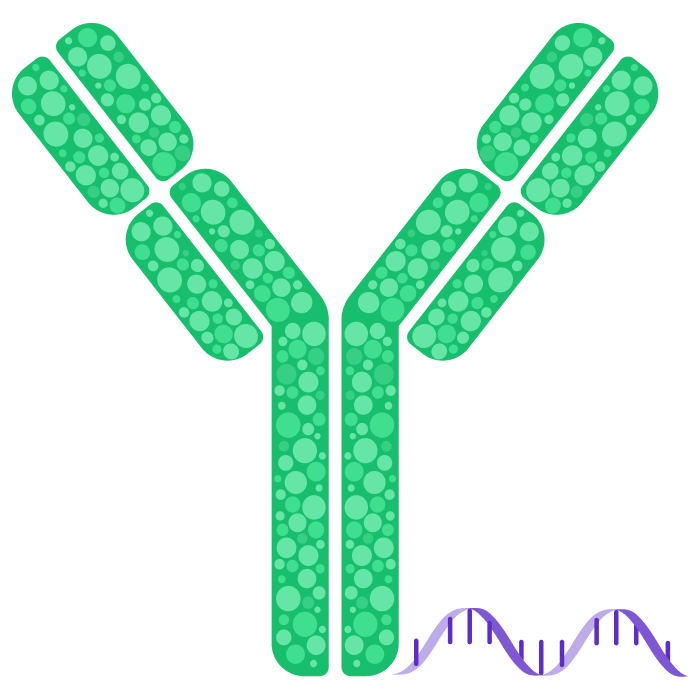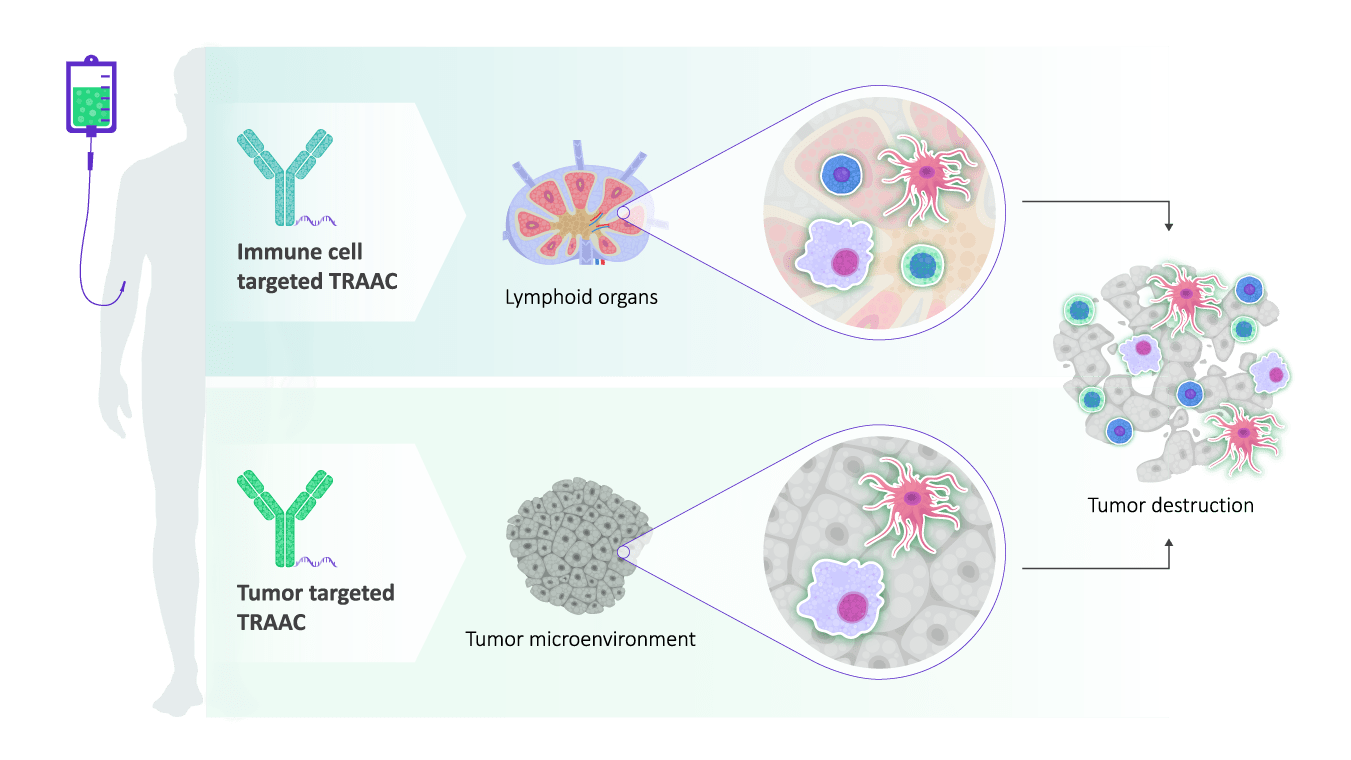Tallac’s novel technology allows precise conjugation of therapeutic oligo payloads, expanding beyond the conventional toxin payloads and enabling the precise and systemic delivery of next gen therapies such as CpG oligonucleotides (TLR9 Agonist), antisense oligonucleotides, and siRNA. Tallac’s most advanced programs leverage the power of clinically validated CpG oligonucleotides to activate immune cells to fight cancer. We developed a novel Toll-like Receptor Agonist Antibody Conjugate (TRAAC) platform to deliver a potent TLR9 agonist (T-CpG) for targeted immune activation via systemic administration.
Toll-like Receptor Agonist
Antibody Conjugate (TRAAC)
Tallac’s novel Toll-like Receptor Agonist Antibody Conjugate (TRAAC) platform enables systemic delivery of a differentiated, targeted TLR9 agonist (T-CpG) for immune activation.
TRAAC
- T-CpG is comprised of monomeric CpG-containing oligonucleotides optimized for potency and stability as an antibody conjugate.
- TRAAC utilizes site-specific conjugation, allowing precise control of the positioning and number of T-CpG molecules conjugated. This in turn enables fine tuning of the conjugate activity.
- The activation of specific immune cell populations systemically or in the local tumor microenvironment is achieved by selecting the appropriate cellular targets and antibodies for T-CpG conjugation.



